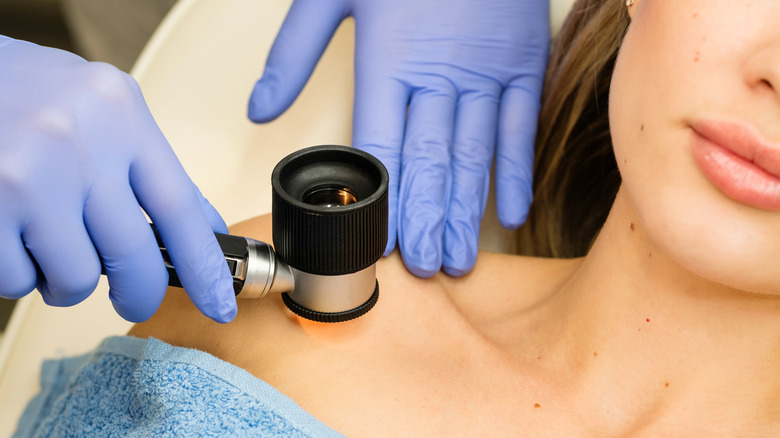Nevus Birthmark: What It Means And Why Some People Have It Removed
If you're on TikTok, you might have seen Gloria Aste, whose congenital nevus birthmark had people assuming she had a blackout tattoo. She used TikTok to address her critics and educate people about her giant congenital nevus. She said it was hard for her to grow up with the birthmark that extends from her neck to the middle of her torso.
A nevus birthmark can appear at or just after birth. Because your skin's pigment comes from melanocytes, sometimes these skin cells will collect in one place on the body. A congenital nevus birthmark can be small, hairy, or bumpy, and the birthmark can change over time.
Small congenital nevi (less than 1.5 centimeters) are relatively common, occurring in about 1% of children, according to DermNet. About 1 in 1,000 babies are born with medium-sized nevi. Giant congenital melanocytic nevi are rare, occurring in 1 in 20,000 infants. The garment-like variant similar to Aste is even more uncommon.
While smaller nevi typically aren't treated, some people have them removed because they might be unsightly, pose difficulty in monitoring changes, or appear similar to melanoma.
Why congenital nevus birthmarks are removed
According to MedlinePlus, children can develop mental or emotional problems due to their congenital nevi, particularly if they are large. Some of the melanocytes can form clusters around the tissues in the brain and spinal cord, causing headaches, vomiting, irritability, seizures, or brain tumors.
Although most melanocytes are harmless, giant nevus birthmarks over 20 centimeters have a higher risk for melanoma. According to a 2013 article in Anais Brasileiros de Dermatologia, between 5% and 10% of people with giant congenital melanocytic nevi could develop melanoma. That's why it's important to monitor and remove them if they change.
Removing a congenital nevus birthmark might require surgery, depending on the nature and size of the birthmark. According to the Children's Hospital of Philadelphia, plastic surgery might be needed for some removals to take care of any scarring and to improve the skin's appearance. Dermabrasion, chemical peels, and other methods of removing the melanocytes are also options. Even if the birthmark has been removed, people who've had a congenital nevus birthmark must continually have their skin checked for any possible malignancy to avoid melanoma.


